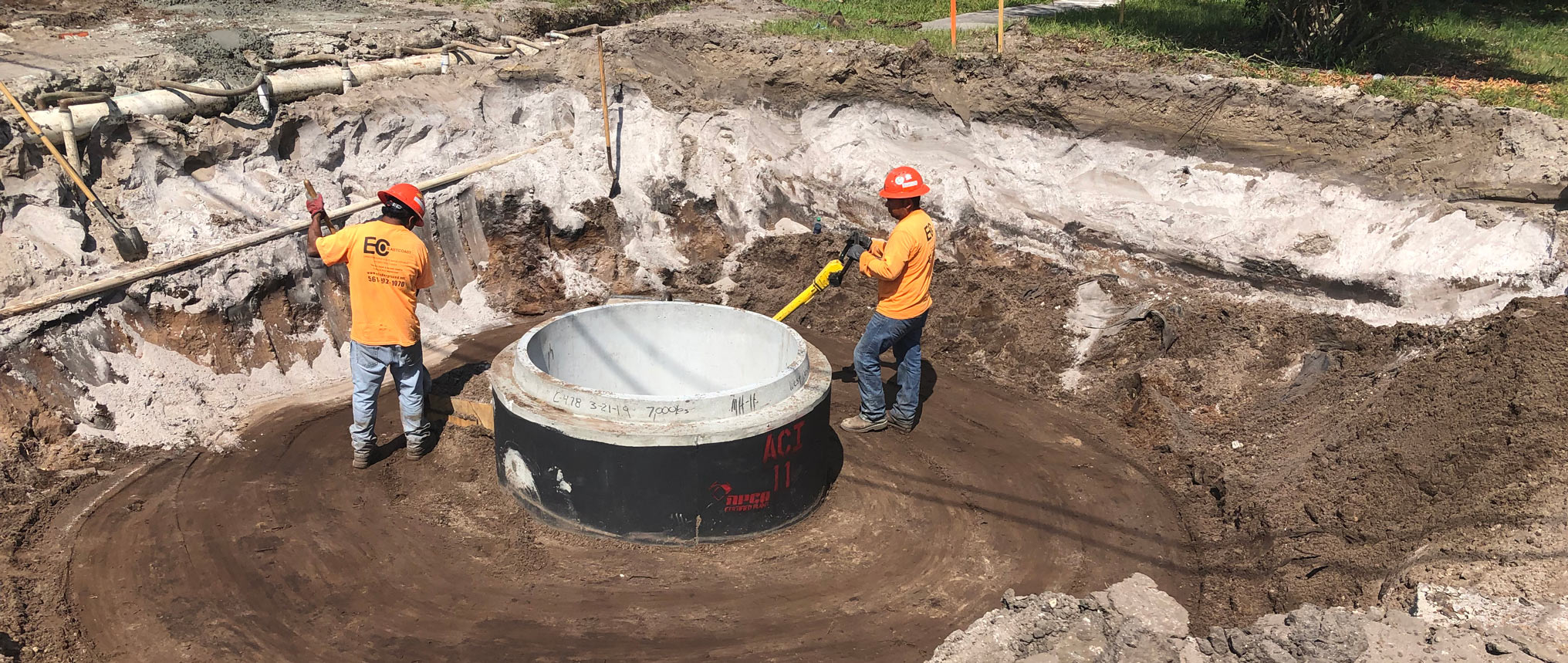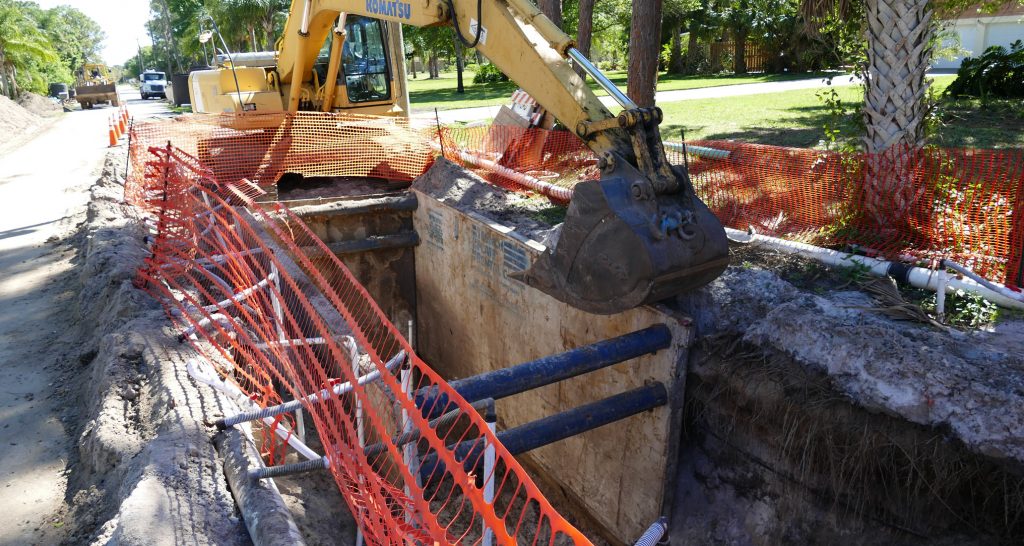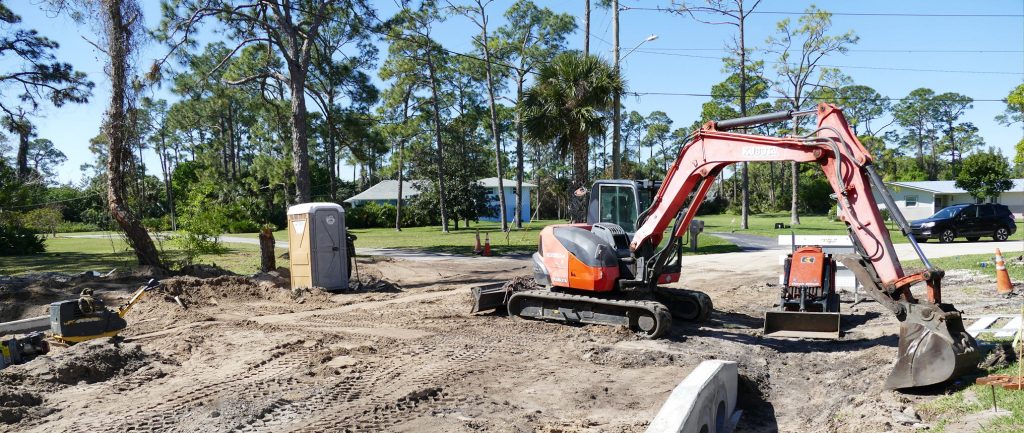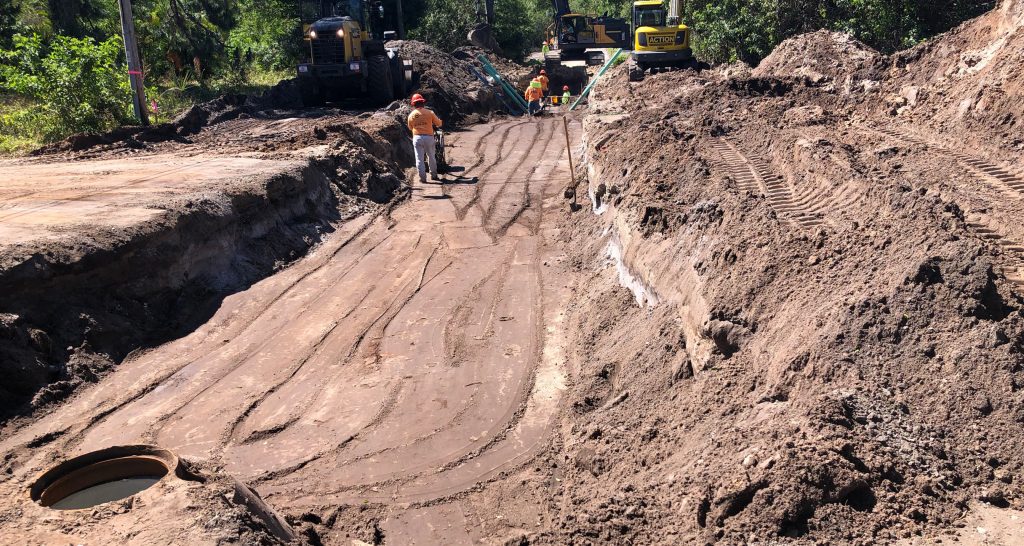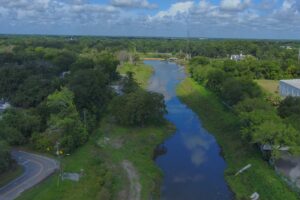Cost-sharing our way to
a cleaner Indian River Lagoon
The diesel motor of a backhoe shatters the morning stillness of Sylvan Avenue in West Melbourne. It’s an established neighborhood with expansive lots and lush landscaping, a welcome escape from the city’s sprawling commercial district.
Construction activity has overtaken the neighborhood. Sanitary sewer pipes, dust and newly dug ditches dominate the landscape. And nobody in the neighborhood is complaining.
Thanks to a financial boost from the St. Johns River Water Management District’s cost-share program, West Melbourne is installing a sewer line beneath Sylvan Avenue (known as a septic-to-sewer conversion project). Soon, 59 homes that have relied for decades on septic tanks — in some cases, multiple tanks — will have the ability to connect to sewer service. It’s a big deal for West Melbourne in more ways than one.
“We’re freeing an entire neighborhood from dependence on septic tanks while simultaneously reducing nitrogen loadings into the Indian River Lagoon,” says Keith Mills, West Melbourne’s Deputy City Manager/Capital Projects Director.
“We couldn’t have done it without financial help from the district’s cost-share funding program and Save Our Indian River Lagoon tax monies.”
The district’s cost-share programs enable local governments to complete vital projects that they might otherwise be unable to afford on their own. In this case, the district contributed $674,000 toward the $2 million neighborhood project to benefit the Indian River Lagoon, a 156-mile-long estuary challenged by the effects of population growth over the past 40 years.
“We’ve been relentless in our work to reduce nutrient flows to the Indian River Lagoon,” says St. Johns River Water Management District Executive Director Dr. Ann Shortelle. “For decades, we’ve worked independently and with partners to gather lagoon data and complete water quality projects, but our cost-share program has bolstered all of these activities.”
Since 2014, the district has contributed more than $16.2 million toward $57.4 million in cost-share projects aimed at improving the health of the estuary, she adds.
Lagoon cost-share projects aren’t just limited to septic-to-sewer conversion. Projects have ranged from wastewater treatment upgrades to oyster reef installations, muck removal and stormwater system improvements. However, the West Melbourne project illustrates how sewer system upgrades below the ground can have a major impact on the health of a water body miles away.
The neighborhood lies within a quarter mile of the M-1 Canal, which flows directly to the Indian River Lagoon. Old or poorly functioning septic tanks can leak nitrogen, phosphorus and pathogens into the ground. High water tables and sandy soil allow them a pathway to water bodies like the lagoon. Excess nutrients — whether they originate from storm drains, runoff or septic tanks — enter the waterway and fuel algal blooms. Blooms can deplete oxygen levels in water, block sunlight needed for the lagoon’s life-giving seagrasses to survive, cause fish kills or impact other wildlife, such as dolphins and pelicans.
We’ve been relentless in our work to reduce nutrient flows to the Indian River Lagoon.
By connecting this neighborhood to central sewer service, city officials expect an annual reduction of approximately 642 pounds of nitrogen from reaching the Indian River Lagoon.
“Our partnership with West Melbourne illustrates how cost share-projects enable us to make positive, quantifiable impacts on water quality in the lagoon,” says Shortelle. “A healthy lagoon isn’t just good for people and marine life, it’s necessary for a vital regional economy in scores of cities and towns in the lagoon region.”
Another success story is 30 miles to the south, in the tiny burg of West Wabasso. Here work has wrapped up on a cost-shared septic-to-sewer project that has connected 52 parcels to the county’s sewer system, abandoning 65 septic tanks in the process (some of the properties contained more than one septic tank), and providing hookups for 47 vacant parcels.
“This is a financially disadvantaged community where many residents were beset by dilapidated septic systems,” says Arjuna Weragoda, Indian River County’s Capital Project Manager. “Inefficient septic tanks cause groundwater contamination by allowing wastewater to percolate into the groundwater and ultimately to the lagoon. The sewer service eliminates that problem.”
“Our project was a success, thanks to St. Johns River Water Management District’s cost-share assistance,” Weragoda says. “The Indian River Lagoon is the heart of this region. Every project we complete is one more step toward lessening our impact on its health.”
St. Johns Water Management District cost-share programs serve communities throughout the district’s entire 18-county jurisdiction. Funding may be available for local governments, agricultural interests and Rural Economic Development Initiative (REDI) communities.
The programs are designed to assist in creating sustainable water resources, improving water quality and natural systems, providing flood protection and enhancing water-conservation efforts. Since 2014, the district has contributed more than $197 million toward the $504 million in projects. Learn more by visiting www.sjrwmd.com/localgovernments/funding


